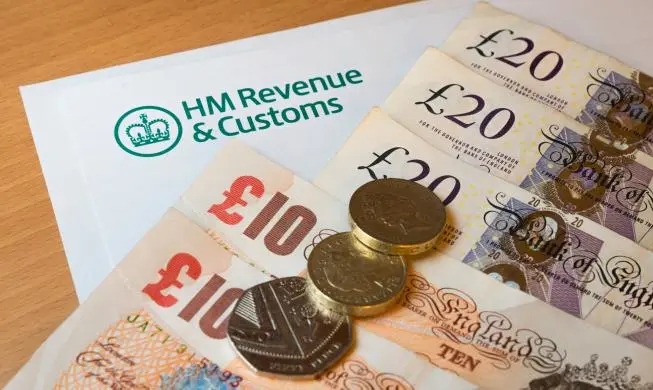ISAs and tax efficient savings allowances to consider now
- by Ellen Ward
- Thu, May 02, 2024
- 5 minute read

The new tax year is upon us, and with it a whole host of new rates, charges and allowances to consider when it comes to best management of your financial portfolio.
There is a lot to consider when it comes to the allowances available and the potential pitfalls of tax charges, rates and limits, so it is important to seek professional financial advice if you need help to make the most of the opportunities.
Here is a key checklist of new tax year allowances, benefits and pitfalls you should be aware of.
Pensions lifetime allowance
The pensions lifetime allowance (LTA) has finally been fully abolished and replaced by new rules. Although the first step was made last year to remove the charge associated with the LTA, it has now been fully abolished by law.
This means, currently, there is no limit on how much you can accrue into a pension. There are, however, two new allowances that you should be aware of that have replaced the old one.
First of these is the lump sum allowance (LSA). This caps the tax-free lump sum at £268,275. This means in effect that the tax-free lump sum you can take from your pension is now 25% - up to a limit of £268,275.
The second allowance is the lump sum and death benefit allowance (LSDBA). This is set at £1,073,100. This allowance is relevant when a pension is paid out on death or due to serious ill-health.
The caveat to these new rules is that while this is the current regime, it might not last long. The UK is due to have a General Election between now and January 2025 – which the Labour Party is expected to win. Labour has committed to reversing the removal of the LTA, although it has been warned this would be difficult and complicated.
The party has already been forced to admit it won’t be able to create profession-specific lifetime allowances (for instance, for headteachers and doctors), one of the key concessions and reasons for the LTA abolition in the first place. It remains to be seen what will actually happen.
National Insurance
Jeremy Hunt cut National Insurance for the second time at his most recent Budget. The two cuts in tandem bring National Insurance down from 12% in 2023 to now just 8%.
Hunt has said his ambition is to remove the charge completely, but this is unlikely to happen in the next 12 months.
Reducing rates of National Insurance while maintaining income tax thresholds to increase revenues – a phenomenon known as ‘fiscal drag’ – is increasingly pushing the burden away from workers and onto retirees. This is because only people in work pay National Insurance – but everyone pays income tax on earned income.
As such it is essential to use tax-free allowances in tax wrappers such as ISAs for your wealth and income to minimise the income tax liabilities.
Child benefit
For anyone with a young family and on a higher income, the Chancellor made some key changes to child benefit that could have a positive impact on your income.
Child benefit is paid at £25.60 a week for the eldest child and £16.95 per week for each subsequent child.
Until 2023/24 child benefit entitlement was capped at £60,000 of income per parent. Beyond £50,000 the Government tapered the entitlement which meant the higher your income was above £50,000, the less you’d receive. If one parent’s income was above £60,000 then the benefit was withdrawn completely.
Now, however, the thresholds have been shifted. Child benefit entitlement is available for anyone earning up to £80,000 – with the taper starting at £60,000. This means the taper only limits child benefit at half the rate of the previous taper as your earnings increase.
Even if you don’t need the extra cash, it is worth claiming as the money can be set aside for a rainy day or put to use elsewhere. Just be aware if you earn over £60,000 then you’ll have to file a tax return and HMRC will claw back some entitlement – so ensure you set aside money to pay the tax bill.
The Treasury is also looking at changing how households are assessed for child benefits, but this is not set to come into effect until 2025/26. For instance, one family where a parent earns £80,000 and the other earns nothing will receive no benefits. However, a family where two parents both earn £60,000 – for a combined income of £120,000 – will receive the full benefit.
ISAs
There has been no change to the current overall ISA allowance for 2024/25 – but this is something to be aware of in and of itself. As with income tax thresholds that have been frozen, the ISA allowance has been held at the same level for several years now – leaving cash exposed to fiscal drag.
It is essential, with the further clampdown on Capital Gains Tax (CGT) and dividend allowances, to ensure you’re maximising your ISA allowance every year. This is also essential from an income tax minimisation perspective too, as mentioned above.
Capital Gains Tax and dividend allowances
The Capital Gains Tax (CGT) allowance has been cut in half for tax year 2024/25. Last year it was set at £6,000 and is now just £3,000. This follows on from a cut from £12,300 the year before, marking a substantial squeezing of the allowance for capital gains.
Similarly to CGT, the dividend allowance has been slashed in half, to just £500 for 2024/25.
What is essential here is to look for ways to mitigate the effects of CGT and dividend taxes. This is best done in a product such as an ISA which is sheltered from both.
If you would like to discuss any of these key allowances, changes or liabilities don’t hesitate to get in touch with us to discuss your options.


